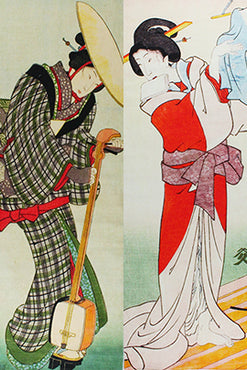Mask made with a tenugui
Posted on Wednesday, March 10 2021 01:31:42 PM in news by 友和春田
Founded in the 32nd year of the Meiji era. I have been making tenugui for 120 years.
I would like to give you one point advice on making tenugui, which the 5th generation of a long-established tenugui wholesaler talks about.
Today, I would like to talk about towels that are useful in the event of a disaster. The other day, when a friend was watching TV on some program, a Self-Defense Forces member appeared and said that there was always a towel in my bag!
I hadn't seen it, but as a towel shop, I always told him that this was useful for disaster prevention, but the SDF personnel who are actually working in disaster relief etc. I reconfirmed that he was saying.
Now, how can it be used? First of all, I would like to talk about the characteristics of tenugui.
Features of tenugui
Tenugui are made from 100% cotton yarn in a plain weave.
Plain cotton fabrics have existed since the Muromachi period. At that time, it was treated as a luxury item as a gift to God, but in the Edo period, it became a presence that can be reached by the common people.
Tenugui was worn by a farmer on his waist or under a straw hat. At that time, tenugui were used in a way that was closely related to daily life.
When I wiped my hands or took a bath, I used to wash my body like a towel now.
It was used as a substitute for towels because it was an era when there were no towels. The characteristic of tenugui is that it has good water absorption and dries quickly.
Compared to towels, the amount of water that can be absorbed is small, but it absorbs quickly and dries quickly, which is a characteristic of tenugui. A tenugui that has been squeezed tightly for about 10 minutes will dry if it is dried in a well-ventilated place.
This is hygienic and seems to have been good in the Edo period. In this era, I used it not for disaster prevention but for everyday use.
Nowadays, tenuguis and towels can be separated from each other, so we understand the good points of towels and towels and use them properly.
Various useful uses of tenugui
In fact, the Self-Defense Forces member said in the first place that "white towels reflect light and are very noticeable when shaken when rescue is needed."
It's thinner than a towel, so I think it's very easy to swing. Then, the tenugui can be torn immediately regardless of whether it is cut vertically or horizontally.
If you make a notch and tear it, you can easily tear it to the end with the same width.
By tearing the washcloth and replacing it with a bandage, you can use this washcloth to cover the wound if you get injured. It is also possible to hang your arm like a sling by hanging it around your neck without breaking the towel.
Tenugui are generally 90 cm long.
You can hang your arm just right even if you tie it around your neck. When it's cold, you can wrap it around your neck like a muffler.
As it is 100% cotton, it is very soft and comfortable.
We also sell tenugui mufflers, so please contact us if you like. The length is 180 cm, which is useful. You can also use it as a rope by chopping and twisting the washcloth.
You have to twist it tightly, but you can make it a solid rope by twisting it like a rope.
You can also use a washcloth instead of a mask.
How to make a simple tenugui mask
I also use it, but I don't know if it can block the virus, but it can prevent droplets from sneezing and coughing.
As it is 100% cotton, it is gentle on the skin and soft. In summer, it can be used as a hood by wrapping it around your head to prevent heat stroke and heat stroke.
When you wet the towel and wrap it around your head, it feels cool due to the heat of vaporization.
It's strange because it feels cool even if it doesn't get wet.
Besides this, you can also use a towel instead of a bag or a furoshiki. In the unlikely event of a disaster, use a towel instead of a towel.
In the Edo period, it was used like a towel, so it's okay. In this way, tenugui are as easy to use as towels. I think everyone has a backpack for disaster prevention. Please put a towel in it.









